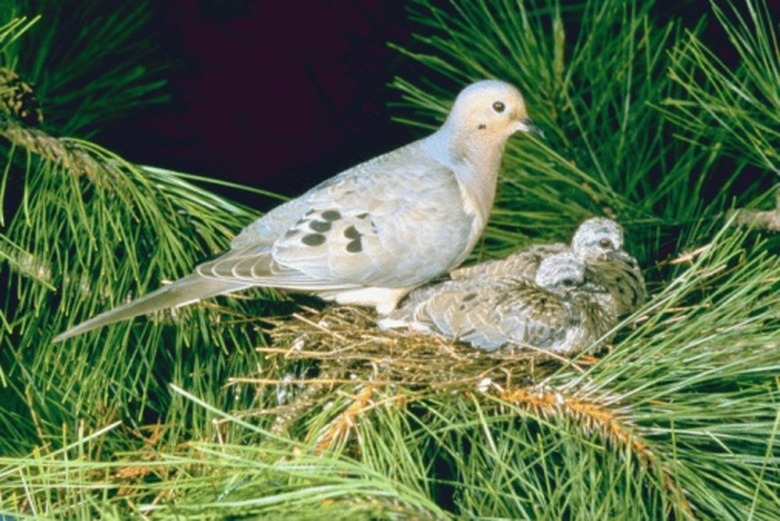How To Take Care Of A Mourning Dove
Mourning doves, also called turtle doves, are popular wild birds thanks to their soft, mournful cooing. They're found in abundance across North America due to prolific breeding. Mourning doves produce up to six broods a year in warm climates, which is more than any other native bird. When not breeding, these birds are active during the day, foraging in small groups and roosting at night to sleep.
Mourning doves are dull-colored birds sporting shades of gray and brown, although the male has pinkish feathers around his face and chest and a slight blue hue on top of his head. Both male and female mourning doves are the same size. Adults range between 9 and 13 inches in length and have an average life span of 1.5 years.
Mourning dove diet
Mourning dove diet
In the wild, mourning doves forage on the ground for seeds, eating quickly and digesting later. An enlarged part of the esophagus is called a crop, and that's where they store food after eating it quickly. If you want to help care for wild doves, fill a platform feeder with a variety of seeds, including canola, sunflower, corn, and millet, but don't expect them to perch.
Mourning doves will be found under residential bird feeders eating fallen seeds from the ground. The mourning dove diet is almost exclusively seeds from cultivated grains, grasses, and ragweed. Rarely do they eat anything else.
Mourning dove habitats
Mourning dove habitats
Both male and female mourning doves are involved in building nests, though poorly. These birds are known for their poorly constructed homes in trees, shrubs, hanging plants, and even on the ground. The male gathers grass, twigs, and pine needles and gives them to the female, who stays in the nest. If you find an empty, messy mourning dove nest, don't assume it's been abandoned.
Typically, females lay two eggs, and both parents take turns incubating them for two weeks. Fifteen days after hatching, fledglings leave the nest, though they usually stay near the nest if they aren't targets of predators. Parents will feed them for another two weeks. If you find a newly hatched mourning dove who has fallen from a nest, you can put her back, even repairing the nest if necessary. The parents won't reject her. Don't take the baby bird home.
Can you keep mourning doves as pets?
Can you keep mourning doves as pets?
You cannot keep a mourning dove as a pet in North America. While many other species of doves and pigeons are kept as pets, mourning doves are a wild species and are protected under the Migratory Bird Act. Consequently, it is illegal to own or domesticate a mourning dove in most of Canada and the United States.
Mourning doves are found in licensed aviaries and zoos because they're easy to care for if there's enough space. They must fly to keep their wings strong and should be kept in groups because they are social birds. Seeds from pet stores intended for domestic birds sprinkled on the ground will keep them fed.
Are mourning doves good luck?
Are mourning doves good luck?
It can't be said definitively if mourning doves — sometimes called gray doves — are lucky, but they are popular in folklore representing peace and innocence. In some mythologies, it's believed that when a mourning dove visits you, it's a message from a departed relative or loved one.
Doves in general represent renewed faith, and gray doves specifically sometimes represent mourning or loss. Others believe that the appearance of this bird rekindles hope, even claiming that the bird's cooing is a message from the heavens.
